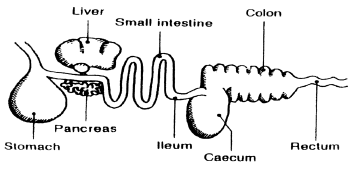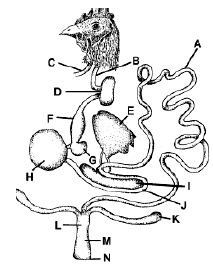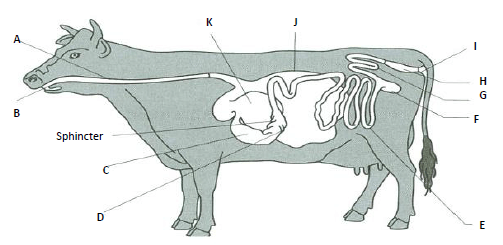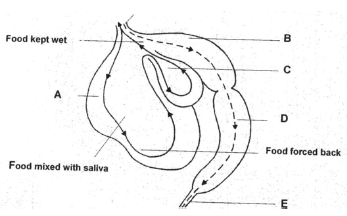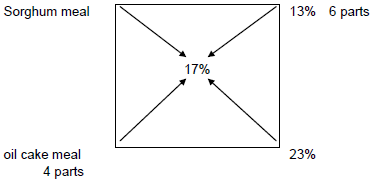ElimuZA Access to Education
Animal Nutrition - Agricultural Sciences Grade 12 Revision Guide and Frequently Asked Questions
Share via Whatsapp Join our WhatsApp Group Join our Telegram GroupAnimal Nutrition
Paper 1
- Concepts
- Ruminant: Animal with a complex/compound stomach [eg. Cattle, Sheep, Goats]
- Non-ruminant (monogastric): Animal with a single/simple stomach [eg. Pigs, Poultry, Horses]
- Rumination: The process of bringing back the cud/bolus food into the mouth for re- chewing, re-insalivation and re-swallowing.
- Peristalsis: The movement of food through the alimentary canal / rhythmic contraction and relaxation of muscles of the alimentary canal.
- Retroperistalsis /regurgitation: The bringing back of food from the stomach to the mouth cavity.
- Chyme : The contents of the stomach
- Chyle: The contents of the small intestines
- Biological value (BV): The quality of proteins in the feed.
- Diagrams. Possible diagrams.
- Alimentary canal for a pig
Carefully take note of the main parts of the alimentary canal of a pig and locate their functions in the process of digestion.
- Alimentary canal for poultry
Attempt to label all labeled parts and the functions of D, H and N.
- Alimentary canal for cattle
Identify all labeled parts and supply functions for C, D, L,
- Process of rumination
This process is critical in ruminants. It ensures that food ingested is properly chewed and re-swallowed for chemical digestion to continue.
- Alimentary canal for a pig
- Calculations
NB: In all calculations, don’t forget to use a calculator.- Digestibility coefficient:
Note the formula and the calculations for digestibility coefficient
Digestibility coefficient t= (Feed intake – moisture) – DM Excreted X 100
(Feed intake - moisture)
OR
Digestibility coefficient = Dry matter intake – Dry matter of manure X 100
Dry matter intake
E.g. A cow eats 10kg of maize with a 10% moisture content and excreted 4kg of dry matter
= 9 kg – 4 kg X 100
9 kg
= 5 kg x 100
9 kg
= 500 kg
9 kg
= 55,6 % (56 % ) - Nutritive ratio (NR) Note the following:
- Know the Definition of Nutritive Ratio
NR is defined as a ratio used to determine the protein content of feed for animals - Know the formula of NR
- Interpretation/implication of the Narrow and Wide ratios
NR = 1: % Non-nitrogen substances
% Digestible Protein (DP)
OR
NR = 1: %Total digestible nutrient (TDN) - %Digestible protein (DP)
% Digestible Protein (DP)
Calculate the NR—- Maize has a TDN of 80% and DP of 10%
- Soya bean has a TDN of 72% and DP of 12%
- Oats has a TDN of 95% and DP of 5%
NR =1: 80 - 10
10
= 1:70
10
= 1:7 (Wide NR) above 1:6 .Suitable for Maintenance( more carbohydrates and less proteins)
NB IF NR is 1:5 or less(Narrow NR) the feed is Suitable for growth , production and reproduction(MORE Proteins and Less carbohydrates).
- Know the Definition of Nutritive Ratio
- Pearson square
A Pearson square is used to balance rations. If for instance, a farmer has got Sorghum meal that contains 13% digestible protein (DP) and oilcake meal with digestible protein content of 23% . The farm animals kept require 17% digestible protein (DP), then the calculation for balancing the rations is done as follows:
- Digestibility coefficient:
